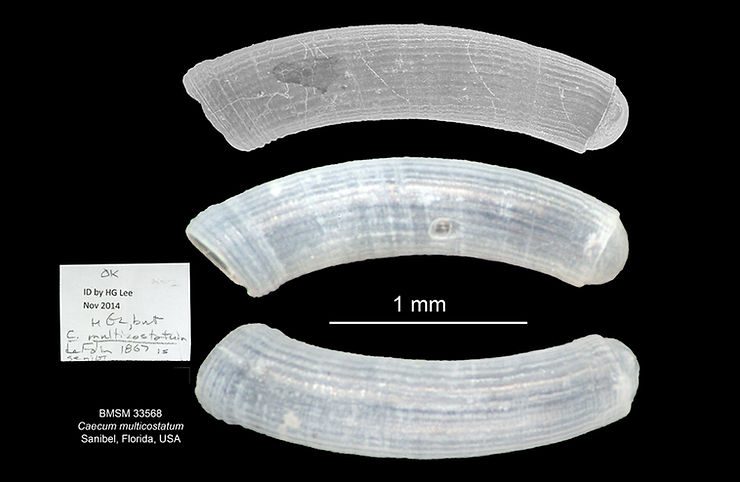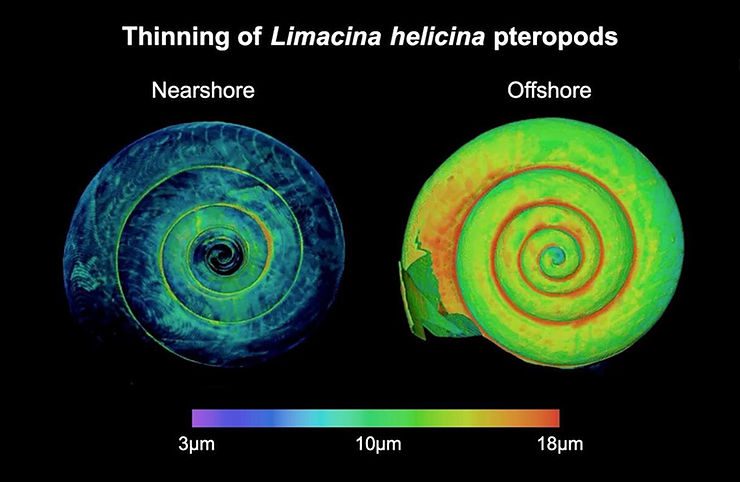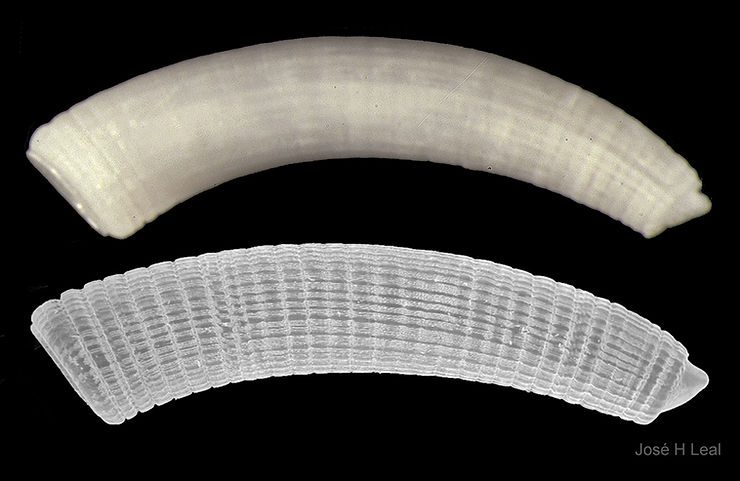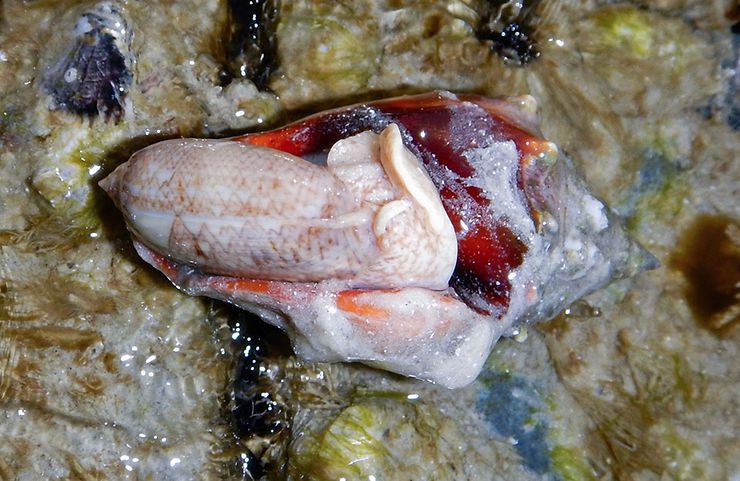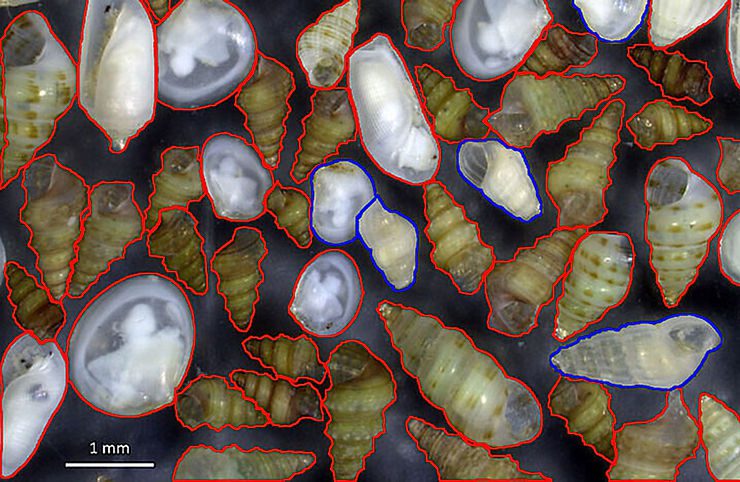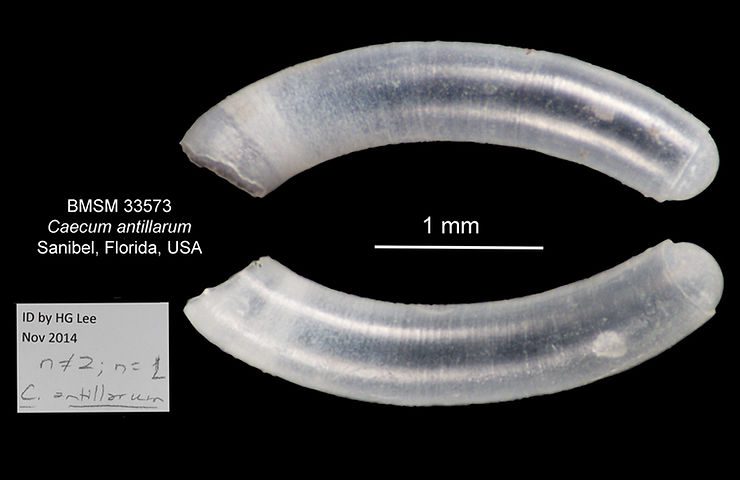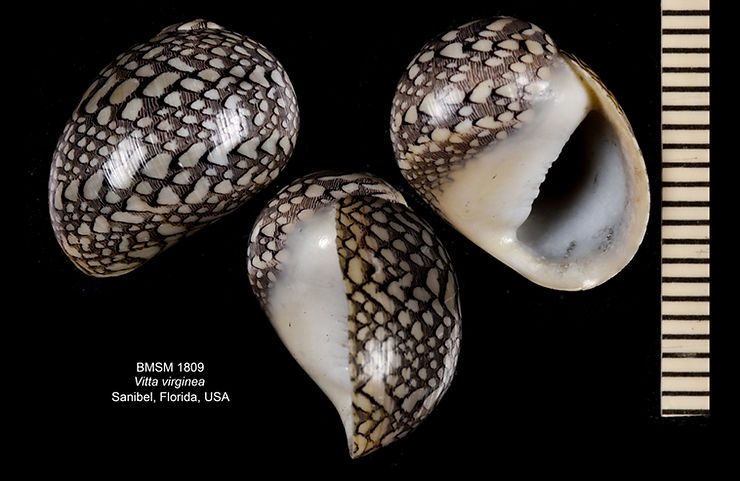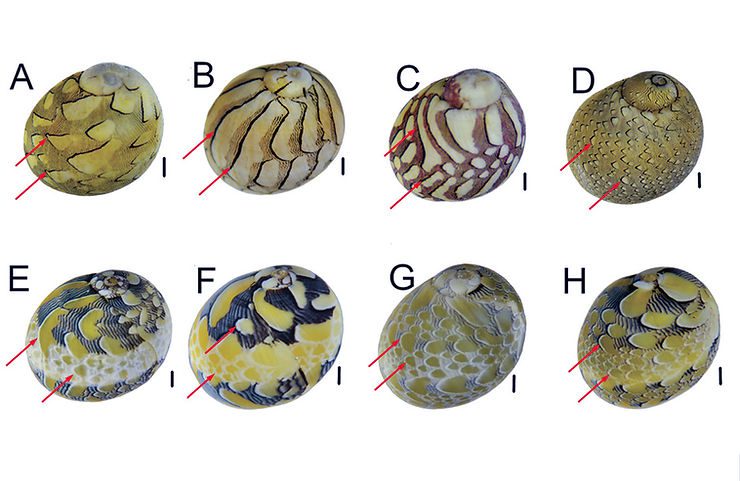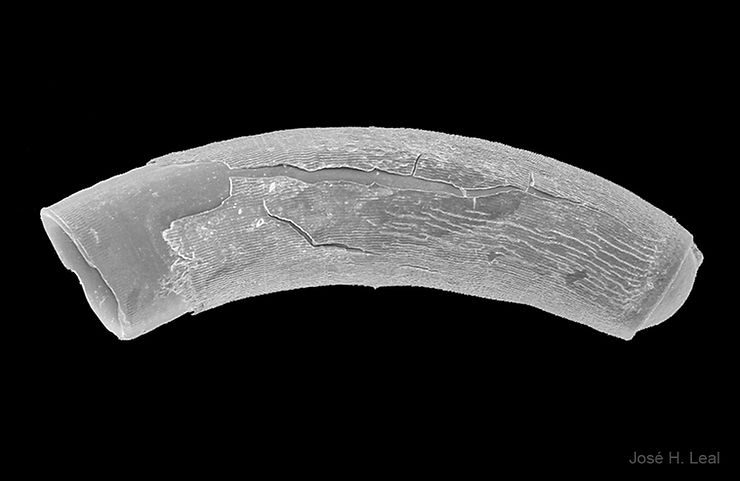
Shell of the Week: The Striate Caecum
Another small (and neglected) local species of the family Caecidae (the caecums), Caecum striatum de Folin, 1868 has a tubular shell that rarely reaches beyond 2.5 mm (about 0.1 inch). The shell is sometimes covered with a thin, light-brown periostracum. The shell sculpture in this species shows a number of lengthwise, delicate lines. The shell aperture (opening) is devoid of any ornaments or rings. The shell "plug" is blunt, hemispherical. The shell color is white. The image was taken with a Sc
